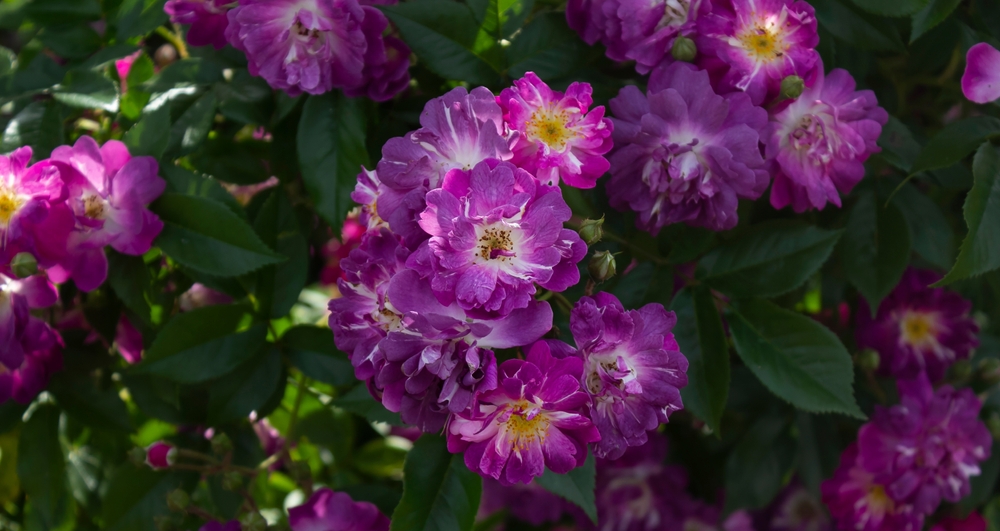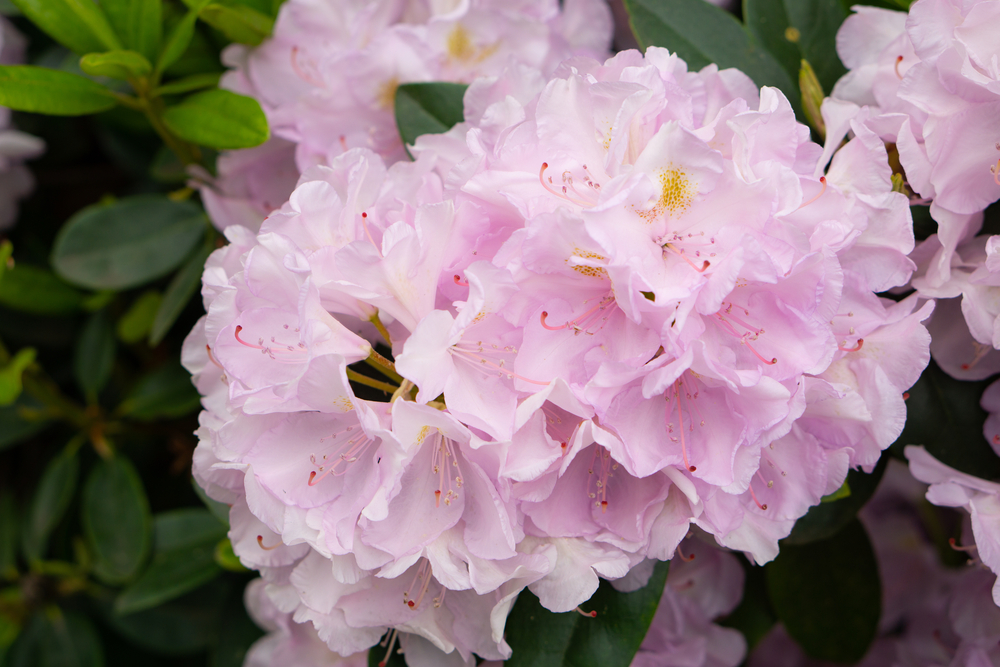How to Grow and Care for Rhododendron Garden Hybrids
Hybrid flowers are only limited by the imagination of whoever combines the species together. They can form flowers with unique characteristics ranging from colour, to fragrance, resistance and more. Rhododendron Garden Hybrids are no different.
But what exactly do they require in order to grow? And do they have a laborious maintenance routine?
West Somerset Garden Centre is a traditional independent haven, rooted in a rich history of forestry and landscaping dating back to the late 1970s. Offering an expansive variety of trees and shrubs all year round, backed by our original expertise as growers.
What is a Rhododendron Garden Hybrid?
A Rhododendron Garden Hybrid is the outcome of cross-breeding two different Rhododendron species (which can include existing hybrids). This can result in a number of aesthetic changes, behavioural changes and changes to general resistance.
Some breeders may have their own specific aim for cross-breeding these plants, whereas others do it specifically to create a superior plant through the cross-breeding. Making the new plant more valuable or desirable to due to its new features.
These new features can include:
Unique/improved aesthetics
- Unique shades and natural designs.
- Thicker petals, larger trusses and bells with better formation.
- Variation on bloom time
- Compact/dwarf forms, ideal for smaller gardens, containers, or rockeries.
- Good branching, creating dense, well-structured plants that don’t become leggy.
- Attractive foliage, beyond just green, breeding for attractive indumentum (fuzzy undersides), unique leaf shapes, or vibrant fall colour in deciduous types.
- Many popular rhododendrons lack scent; breeding for fragrant flowers is a high priority for many.
Adaptability
- Greater tolerance for cold weather, allowing for an expanded growing range, being able to tolerate winter weather.
- On the other side, a better tolerance to the son. This is because a Rhododendron prefers to grow in partial sunlight.
- Resistance against root rot (Phytophthora)
- Greater resistance against common leaf diseases like mildew and fungus.
- The plants can be bred to make them less palatable to common insects.
Can you grow and care for a Rhododendron Garden Hybrid?

Absolutely! It is possible to grow and care for Rhododendron Garden hybrids. They do have specific needs, so they do require care from someone who has the time to spare for them. Generally, they are quite adaptable, so with enough time, and the right set up, you should be growing them in no time!
Here are the key points you have to be aware of when it comes to growing conditions and general maintenance:
1. Give it the right ‘home’:
- Rhododendron Garden Hybrids prefer partial shade, or an area with filtered light. They can handle the morning sun, but the intensity of the midday sun can damage it. Keep this in mind when it comes to deciding where it should go.
- Aside from light protection, it does also need shelter from strong and/or cold winds, as it can dry the leaves over time.
2. Soil matters!
- Rhododendrons prefer a slightly acidic soil, with a pH level between 4.5 to 6.0. This can be tested with a soil pH testing kit.
- If you are growing Rhododendrons in the ground, it must not be alkaline, as this can be a difficult challenge. It may be a better idea to grow them in a container using acidic potting mix instead.
- It’s not just a case of pouring soil in a pot, these flowers thrive in soil that contains organic matter. Certain foliage like composted pine bark or bracken, decomposing pine needles etc will help the plant grow a lot. Be sure to mix this amongst the whole planting area, not just where your Rhododendron will be.
3. Planting:
- The best times to plant are autumn or spring when the soil is not frozen or waterlogged, or exceedingly dry.
- Rhododendrons have shallow, fibrous root systems. This means you shouldn’t plant them too deeply, as this can smother the roots and kill the plant.
- Water the plant thoroughly before and after planting. Ensure the root ball is moist before placing it in the ground.
4. Watering:
- Due to their shallow roots, rhododendrons need consistent moisture, especially during dry spells in late spring, summer, and early autumn. You’ll know if they’ve dried out as the leaves may droop over, or curl.
- If possible, use rainwater for watering, particularly in hard water areas. Tap water contains calcium that can gradually change soil pH over time, making it less acidic.
- Drainage is critical. Rhododendrons absolutely hate “wet feet.” They require moist but extremely well-drained soil. Soggy, waterlogged conditions are the leading cause of root rot and plant death. If you have heavy clay soil, consider planting in a raised bed or mound to improve drainage.
5. Mulching:
- Apply a generous 7.5-10cm (3-4 inch) layer of acidic organic mulch around the base of the plant each spring.
- Mulching helps retain soil moisture, keeps the shallow roots cool, suppresses weeds (avoid hoeing, which can damage roots), and slowly adds organic matter, helping to maintain soil acidity.
- Leave a small gap (about 5cm or 2 inches) between the mulch and the plant’s main stem to prevent rot.
6. Feeding:
- If planted in good, acid soil with regular mulching, rhododendrons often don’t need much extra feeding for the first few years.
- If you notice signs of nutrient deficiency (e.g., very pale or yellowing leaves with green veins, indicating iron deficiency), use a fertilizer specifically formulated for acid-loving plants (ericaceous fertilizer) in late winter or early spring.
Always follow package instructions and ensure the soil is moist before applying. Avoid fertilizing too late in the season, as it can stimulate new growth that is vulnerable to early frosts.
7. Pruning:
- Rhododendrons generally require minimal pruning.
- After flowering, carefully deadhead (remove spent flower trusses). This prevents the plant from putting energy into producing seeds, directing it instead into developing new foliage and more flower buds for the following year.
Do I have to breed my Rhododendron Garden Hybrids myself?
Not at all, we at West Somerset Garden Centre have a range of Rhododendron Garden Hybrids available. Whether you have an experienced green thumb, or are just looking to add grace and character to your garden or space, we have just the Rhododendrons to get you started.
That being said, you can choose to breed your Rhododendrons yourself once they are ready, this is a fun and exciting, but time-consuming and intricate practice to undertake. If you want to start breeding your Rhododendrons, make sure you have enough space, time, and knowledge before beginning.
If successful, you can create your own unique breed of Rhododendron!
Where to start with Rhododendron Garden Hybrids?

Visit West Somerset Garden Centre to explore our full range of rhododendron hybrids—plus expert planting advice and everything you need to help them thrive.
In this blog, we hope to have provided helpful information regarding how to grow and care for Rhododendron Garden Hybrids.
Whether you’re an avid gardener seeking market-leading tools and machinery, looking to create a cosy corner with our rattan or bistro garden furniture (with delivery and setup!). Or, simply adding the perfect touch with our wide selection of terracotta and glazed pots, statues, or birdbaths, or even if you just need a little advice, West Somerset Garden Centre has everything you need.
Our friendly, knowledgeable staff are always ready to help, and you’ll find our shop packed with gardening essentials and unique gift ideas, all sourced from top UK and European suppliers for the widest possible range.
Visit us in-store or contact us via the information below:
Address:
Mart Road,
Minehead, Somerset,
TA24 5BJ
Phone number:
01643 703 612
Email:
enquiries@wsgardencentre.co.uk
Opening hours – Garden Centre:
Monday – Saturday 9am to 5pm
Sundays – 10am to 4pm
Bank holidays – 9am to 5pm
